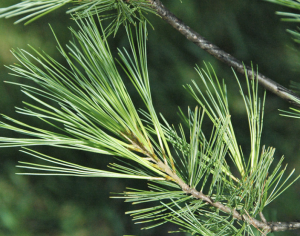Plant Identification Keys
Now that you have a good understanding of plant parts, groups and habitats, you can use this knowledge to identify plants down to species level. Plant keys are one tool to help you do this.
These tools are found in many plant manuals or plant identification field guides.
A key is a list of questions or statements about a plant characteristic. They are sometimes called dichotomous keys because they involve a series of (usually) two choices. You must determine if the statement is “true” (if the description in the key matches the physical appearance of the plant) or “false” (if the description does not match the physical appearance of the plant). A key will begin with statements or questions about more noticeable or visible characteristics, such as branch or leaf orientation, or foliage color. As you work through the key, statements or questions become concerned with smaller components, such as presence or absence of leaf hairs or floral parts. A very simplified example, for the purpose of explaining this tool, follows.
An example of a dichotomous key for tree identification
Let’s identify this tree:

The first decision to be made is whether or not the plant has needles or leaves. Here is an extract of this simple tree key:

Obviously it has needles so 1a is the correct choice. When we make this choice we are told to go to step 2.
At this point we are asked if the needles are in bundles or look like scales. They are bundled in the picture so the correct choice is 2a.
This choice directs us to step 3. We are now asked if the needles are in bundles of 2 or 5.
They are bundles of 5, which makes our plant sample a white pine.
When using a key, always confirm your plant identification with another source- a description and an image. Be sure to use:
- Reliable websites
- Reliable and local books
- Lecturer
- Industry expert
- NT Flora online
